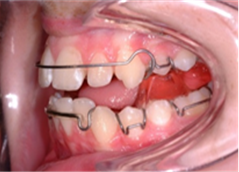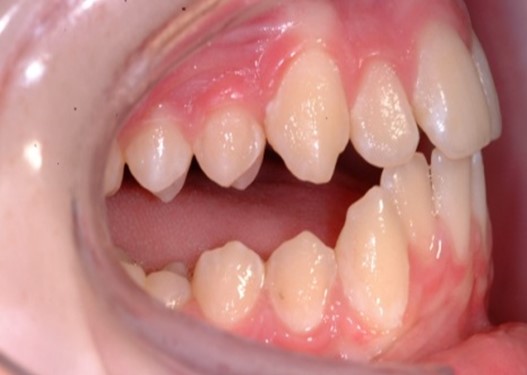Functional Brace
This leaflet has been written for patients who may need a functional brace.
Why do I need a functional brace?
- Your orthodontist has noticed that your bottom jaw is slightly smaller than your top jaw
- This causes a gap between your top and bottom teeth (an increased overjet)
- The aim of treatment is to improve your bite
- Once your bite is in a better position, it will be easier to fully correct your teeth with fixed braces.
What does a functional brace look like?
- A functional brace is a removable brace that clips in and out
- Usually, there will be two separate braces, one that fits on the top teeth and one that fits on the bottom teeth (very occasionally these two parts are joined together)
- The plastic blocks between the top and bottom bracs make you bite in a forward position.
How will it feel when I am wearing them?
- To get an idea of how they will feel, bite the tips of your front teeth together
- You will feel a stretch of the muscles of your lower jaw
- Your functional brace will feel strange to begin with
- There is a lot of plastic in your mouth which takes a bit of getting used to
- You may feel like you have lots of saliva in your mouth.


The first seven days are when it feels most strange and uncomfortable. If you keep them in for these first seven days you get used to the brace and it will not feel so strange anymore. You will notice that your back teeth do not contact each other – the plastic blocks of the brace will fill this gap.
Functional braces feel strange to begin with. There is a lot of plastic in your mouth which takes a bit of getting used to. You will feel like you have lots of saliva in your mouth.
You may also talk a bit strangely for a few days.
We have found that the first two days are when it feels most strange and uncomfortable. If you manage to keep them in for these first two days you get used to the brace and it will not feel so strange anymore.
Will the functional brace affect my speech?
- Your speech will be affected, but usually it gets better within the first two days
- To speed up the process, we advise you to practice talking with the braces in by reading out loud to yourself from a book or magazine.
When do I have to wear them?
- You need to wear your functional brace both during the day and overnight
- You should take them out to eat, clean your teeth and play sports eg rugby or hockey (it is important you put a gum shield in instead).
- When you are not wearing your functional brace, store it in the box provided. If you do not wear it for enough hours per day, your bite may not be fully corrected.
How will I clean them?
- Your functional brace should be cleaned with a toothbrush and liquid soap
- Soak your brace in ‘Retainer Brite®’ once or twice a week. This is available to purchase at our reception desk.
How will I know if the brace is working?
- Your orthodontist will measure the gap between your top and bottom teeth each time you come in
- This will give us a measurement of your progress with the brace
- Many people find that their back teeth do not fit together very well after a while; this is perfectly normal and will be corrected later in treatment.
How long will I wear them for?
- You will wear your functional brace for approximately nine to 12 months.
What if I do not think I could wear one?
- It is best to be honest if you feel you will not be able to wear a functional brace
- It is custom made to your mouth, and therefore a lot of effort and money is invested in making one for you
- Your orthodontist will let you know if there are any other options- for example taking out teeth and using fixed braces. Other options are unlikely to give as good a result.
Do they always work?
- If you wear your functional brace well they are usually very effective
- If you have stopped growing they may not work, therefore your orthodontist will measure if you are still growing
- For patients who are no longer growing, their jaw position can be corrected with jaw surgery when they are older.
Contact numbers
We hope you have found this information useful, but if you have any questions or are worried about anything, please speak to the orthodontic team:
Orthodontic Department (Dorset County Hospital): 01305 2551747
Orthodontic Department (University Hospitals Dorset): 0300 019 4694
About this leaflet
Author: Pamela Ellis, Consultant Orthodontist
Written: March 2021
Approved: April 2021
Review Date: March 2025
Edition: v2
If you have feedback regarding the accuracy of the information contained in this leaflet, or if you would like a list of references used to develop this leaflet, please email patientinformation.leaflets@dchft.nhs.uk
Print leaflet